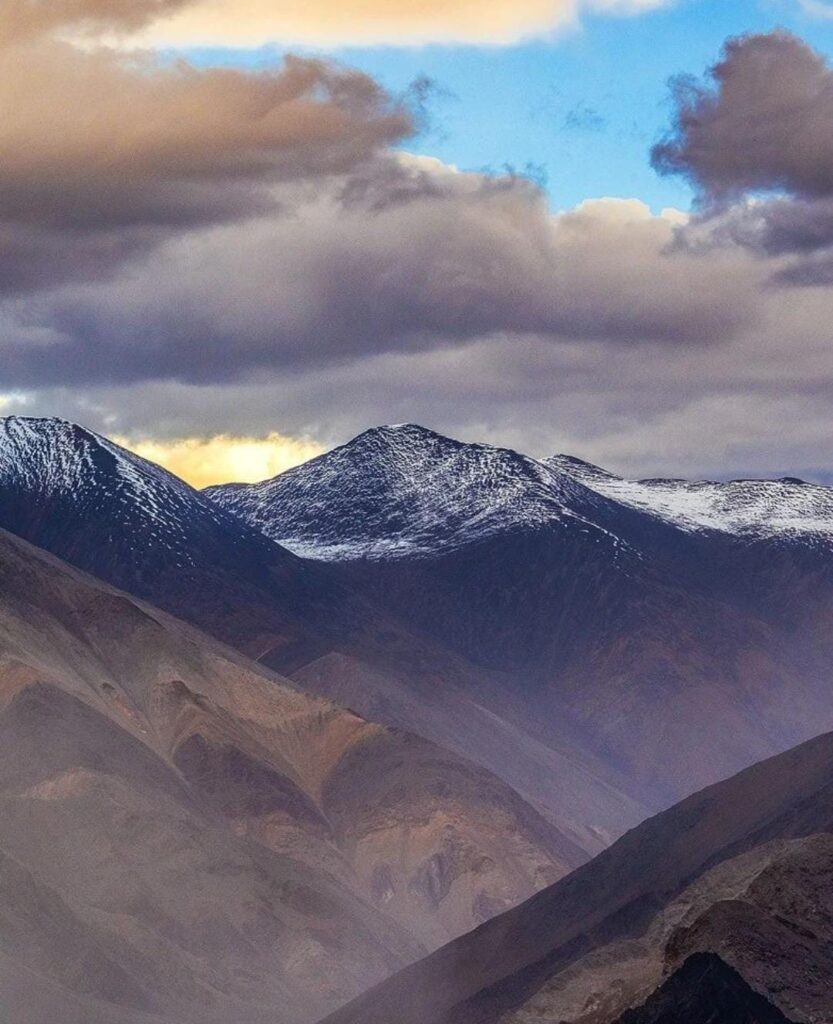
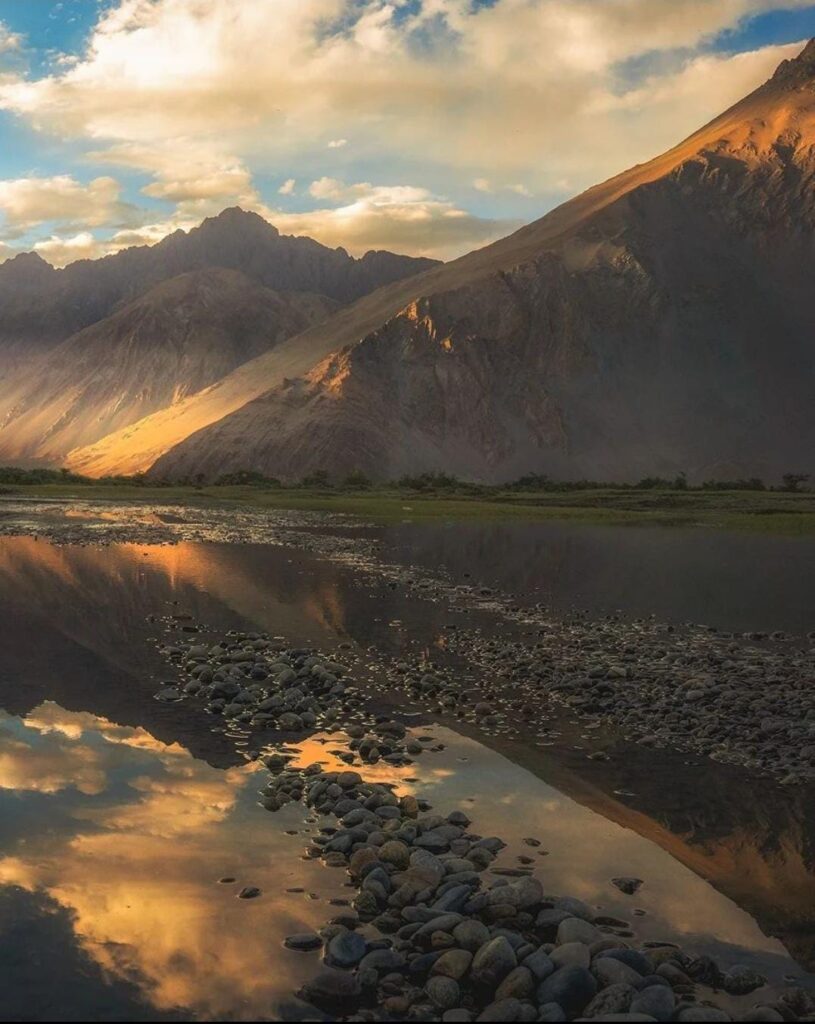
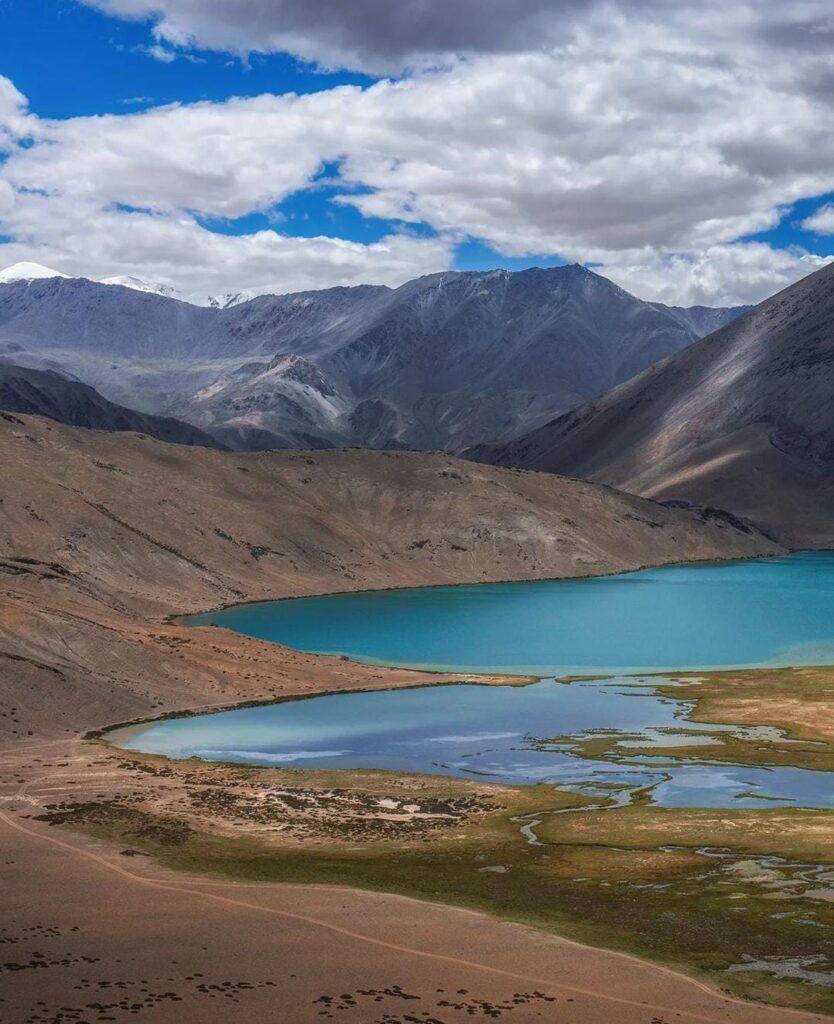
leh ladakh
Ladakh, a remote region in the northernmost Indian state of Jammu and Kashmir (India took control of the area, and Jammu and Kashmir state was created out of it. Leh and Kargil were created as separate districts from Ladakh in 1979. The Ladakh union territory was established by the Indian government in 2019 with these districts serving as its foundation.), is a land of stark contrasts and breathtaking beauty. Nestled high in the Himalayas, at an average altitude of 3,500 meters, Ladakh is a landscape of towering mountains, dry deserts, and sparkling lakes. The region is home to a diverse population of Buddhists, Muslims, and Hindus, who have lived together in harmony for centuries.
Ladakh’s unique culture and heritage is a blend of Tibetan and Indian influences. This is evident in the region’s architecture, cuisine, and festivals. The most iconic landmark in Ladakh is the Leh Palace, a 17th-century palace that once served as the royal residence of the Namgyal dynasty. Other popular tourist attractions include the Hemis Monastery, one of the largest and most important Buddhist monasteries in Ladakh, and the Pangong Tso, a high altitude lake that is renowned for its crystal clear waters and stunning views of the surrounding mountains.
Beyond its natural and cultural attractions, Ladakh is also a popular destination for adventure seekers. The region offers a variety of activities, including trekking, mountain biking, and white water rafting. Ladakh is also a great place to stargaze, as the clear skies and high altitude offer exceptional views of the night sky.
How to Reach Leh Ladakh?
There are two main ways to reach Leh Ladakh: by air and by road.
By air:
Air travel is the simplest and quickest method to get to Leh Ladakh. Kushok Bakula Rimpochee Airport in Leh is well connected to major cities in India, including Delhi, Mumbai, Chandigarh, and Srinagar etc. There are several airlines that operate flights to Leh, including Air India, Vistara, IndiGo, and Go First. The flight time from Delhi to Leh is approximately 1 hour and 30 minutes.
By road:
There are two road routes to Leh Ladakh: one through Manali in Himachal Pradesh and the other through Srinagar in Jammu and Kashmir. The Manali-Leh highway is approximately 474 kilometers long and takes around 2 days to cover by road. The Srinagar-Leh highway is approximately 434 kilometers long and takes around 14 hours to cover by road. Both roads are scenic, but they can be challenging to drive due to the high altitudes and winding roads.
If you are planning to travel to Leh Ladakh by road, it is important to acclimatize to the high altitude before starting your journey. It is also important to check the weather forecast before you travel, as roads can be closed due to snow and landslides.
History of Leh Ladakh
The history of Leh Ladakh is a blend of Tibetan and Indian influences, shaped by its strategic location on the ancient Silk Road. The region has been inhabited for thousands of years, with the earliest known inhabitants being the Dards, an Indo-Aryan race. Later, immigrants from Tibet, Skardo, and nearby parts of Purang and Guge settled in Ladakh.
In the 1st century AD, Ladakh became part of the Kushan Empire. During this time, Buddhism spread into western Ladakh from Kashmir. In the 7th century, the Chinese Buddhist traveler Xuanzang visited Ladakh and described it as a prosperous kingdom with a rich culture.
In the 10th century, Ladakh emerged as an independent kingdom. The Namgyal dynasty ruled Ladakh for over 500 years, during which time the region experienced a period of peace and prosperity. Buddhism flourished under the Namgyal kings, and many important monasteries were built during this time.
In the 16th century, Ladakh became a powerful kingdom in the region. Sengge Namgyal, the most famous Namgyal ruler, expanded the kingdom’s borders and established trade relations with Central Asia and Tibet. Ladakh also became a major center of Buddhist learning during this time.
In the 17th century, Ladakh was invaded by Mughal and Dogra forces. However, the Namgyals were able to retain their independence. In the 19th century, Ladakh became a British protectorate. After India’s independence in 1947, Ladakh became part of the Indian state of Jammu and Kashmir.
Ladakh’s unique history is reflected in its rich culture and heritage. The region is home to a diverse population of Buddhists, Muslims, and Hindus, who have lived together in harmony for centuries. Ladakh’s architecture, cuisine, and festivals are a blend of Tibetan and Indian influences.
Here are some unique aspects of Ladakh’s history:
- Ladakh was once a major crossroads of trade and cultural exchange on the Silk Road.
- Ladakh was ruled by a Buddhist dynasty for over 500 years.
- Ladakh is home to some of the oldest and most important Buddhist monasteries in the world.
- Ladakh was a major center of Buddhist learning during the 16th and 17th centuries.
- Ladakh is home to a diverse population of Buddhists, Muslims, and Hindus, who have lived together in harmony for centuries.
- Ladakh’s unique history has made it a land of rich culture and heritage. The region is a popular tourist destination for people who are interested in learning about Buddhism, Tibetan culture, and the Silk Road.
Best places to visit in leh Ladakh
Pangong Tso/Pangong Lake in leh ladakh
Pangong Tso, also known as Pangong Lake, is a high-altitude endorheic lake in the Changthang valley of Ladakh. It is situated at an altitude of 4,350 meters (14,270 feet) and is 134 kilometers (83 miles) long and 5 kilometers (3.1 miles) wide at its broadest point. About 60% of the lake lies in the Tibet Autonomous Region of China, while the remaining 40% lies in India.
Pangong Tso is known for its stunning beauty, with its clear blue waters reflecting the snow-capped mountains that surround it. The lake is also home to a variety of migratory birds, including the Brahminy duck, bar-headed goose, and black-necked crane.
Leh Palace
Leh Palace, also known as Lhachen Palkhar, is a 17th-century former royal palace and one of the central attractions in Leh, Ladakh. It is a nine-storeyed building and was once the residence of the Namgyal dynasty. The palace is located on a hilltop overlooking Leh and offers stunning views of the city and the surrounding mountains.
The Leh Palace is a unique example of Tibetan and Ladakhi architecture. The palace is made of mud bricks and wood, and is decorated with intricate carvings and murals. There are several gardens and fountains at the palace.
The Leh Palace was abandoned in the 19th century after the fall of the Namgyal dynasty. The palace fell into ruin, but was restored in the late 20th century. The palace is now a museum and is open to the public.
Here is a unique explanation of the Leh Palace:
Imagine a nine-storeyed palace perched on a hilltop, overlooking a city nestled in a high-altitude desert. The palace is made of mud bricks and wood, and is decorated with intricate carvings and murals. The gardens and fountains add to the beauty of the palace.
This is the Leh Palace, a unique example of Tibetan and Ladakhi architecture. The palace was once the residence of the Namgyal dynasty, but it was abandoned in the 19th century after the fall of the dynasty. The palace fell into ruin, but was restored in the late 20th century.
The Leh Palace is now a museum and is open to the public. Visitors can explore the palace’s many rooms and chambers, and learn about the history and culture of Ladakh. The palace also offers stunning views of the city and the surrounding mountains.
If you are looking for a unique and unforgettable experience, I highly recommend visiting the Leh Palace. It is a truly magical place.
Shanti Stupa in leh ladakh
The Shanti Stupa in Leh, Ladakh is a unique and beautiful structure that represents the hope for world peace. It was built in 1991 by the Japanese Buddhist monk Nichidatsu Fuji, who founded the Nipponzan Myohoji Buddhist order. The stupa is white-domed and has four sides, each facing a different direction. This symbolizes the Buddha’s teaching that all people are equal and that peace is possible for all.
The Shanti Stupa is also known as the “Peace Pagoda.” It is one of many stupas that Fuji built around the world to promote peace and understanding. The stupa in Leh is particularly significant because it is located in a region that has been plagued by conflict for centuries.
The Shanti Stupa is a popular tourist destination, but it is also a place of pilgrimage for Buddhists from all over the world. Visitors to the stupa can enjoy the stunning views of Leh and the surrounding mountains. They can also learn about the Buddhist teachings of peace and compassion.
Here is a unique explanation of the Shanti Stupa:
The Shanti Stupa is a beacon of hope in a world that is often filled with darkness. It is a reminder that peace is possible, even in the most difficult of circumstances. The stupa is also a symbol of the interconnectedness of all people. When we visit the Shanti Stupa, we are not just visiting a religious monument; we are also visiting a place where we can all come together to pray for peace and understanding.
The Shanti Stupa is a place where we can all leave our troubles behind and simply be present in the moment. It is a location where we may discover calm and tranquillity. The stupa is a gift to the world, and it is a reminder that we are all responsible for creating a more peaceful and harmonious future.
Hemis Monastery in leh ladakh
Hemis Monastery is a unique and special place. It is one of the oldest and most important Buddhist monasteries in Ladakh, and it is also one of the most remote. Located in a beautiful valley surrounded by mountains, Hemis Monastery is a place of peace and tranquility.
The monastery was founded in the 11th century by Naropa, a renowned Buddhist scholar and teacher. Naropa is believed to have attained enlightenment in Hemis, and the monastery is now considered to be a holy site by Buddhists all over the world.
Hemis Monastery is known for its stunning architecture and its collection of Buddhist artifacts. The monastery complex includes a number of temples, shrines, and meditation halls. The main temple is home to a large statue of Guru Padmasambhava, the founder of Tibetan Buddhism.
The monastery is also known for its annual Hemis Festival, which is one of the most popular festivals in Ladakh. The festival is held over two days in June or July, and it features masked dances, traditional music, and religious ceremonies.
Hemis Monastery is a truly unique and special place. It is a place where visitors can learn about Tibetan Buddhism, experience the rich culture of Ladakh, and enjoy the stunning natural beauty of the region.
Here are some unique aspects of Hemis Monastery:
- It is one of the oldest and most important Buddhist monasteries in Ladakh.
- It is located in a remote and beautiful valley.
- It is a place of peace and tranquility.
- It is home to a large collection of Buddhist artifacts, including a statue of Guru Padmasambhava, the founder of Tibetan Buddhism.
- It hosts the annual Hemis Festival, one of the most popular festivals in Ladakh.
- If you are ever visiting Leh Ladakh, I highly recommend visiting Hemis Monastery. It is a very exceptional and memorable experience.
Spituk Monastery in leh ladakh
Spituk Monastery, also known as Spituk Gompa or Pethup Gompa, is a unique and fascinating Buddhist monastery located in the Spituk village of Leh district, Ladakh, India. It is perched on a hilltop overlooking the Indus River and offers breathtaking views of the surrounding mountains.
Spituk Monastery was founded in the 11th century by Od-de, the elder brother of Lha Lama Changchub Od, who was a renowned scholar and teacher of Tibetan Buddhism. The monastery is named after the ‘spitu’, a type of thorny bush that grows abundantly in the area.
Spituk Monastery is known for its unique architecture, which is a blend of Tibetan and Indian influences. The monastery complex consists of several temples, a library, and a museum. The main temple is home to a large statue of Maitreya Buddha, the future Buddha. The monastery also houses a collection of ancient artifacts, including thangkas (Tibetan Buddhist paintings), sculptures, and jewelry.
One of the most unique things about Spituk Monastery is its annual festival, which is held in January to celebrate the birth of Guru Padmasambhava, the founder of Tibetan Buddhism. The festival features masked dances, traditional music, and religious ceremonies. The highlight of the festival is the unveiling of a giant statue of Mahakaal, a fierce form of Lord Shiva. The statue is kept covered throughout the year and is only unveiled during the festival.
Spituk Monastery is also a popular destination for meditation and spiritual retreats. The monastery offers a variety of programs for people of all levels of experience.
Here are some unique aspects of Spituk Monastery:
- The monastery is home to a large statue of Maitreya Buddha, the future Buddha.
- The monastery houses a collection of ancient artifacts, including thangkas (Tibetan Buddhist paintings), sculptures, and jewelry.
- The monastery is known for its annual festival, which features masked dances, traditional music, and religious ceremonies. The highlight of the festival is the unveiling of a giant statue of Mahakaal, a fierce form of Lord Shiva.
- Spituk Monastery is a popular destination for meditation and spiritual retreats.
- Spituk Monastery is a truly unique and special place. It is a place where people can come to learn about Buddhism, Tibetan culture, and meditation. It is also a place where people can come to experience the beauty of Ladakh and its people.
Tso Moriri in leh ladakh
Tso Moriri, meaning “Mountain Lake” in Tibetan, is a high-altitude lake located in the Changthang Plateau, a remote region in eastern Ladakh, India. It is one of the largest and most beautiful lakes in Ladakh, and is known for its pristine beauty and its unique wildlife.
Tso Moriri is located at an altitude of 4,522 meters, making it one of the highest lakes in the world. It is surrounded by snow-capped mountains and arid landscapes, which create a truly breathtaking sight. The lake is home to a variety of fish, birds, and other wildlife, including black-necked cranes, Tibetan wolves, and Himalayan pikas.
Tso Moriri is a popular destination for trekkers, campers, and birdwatchers. It is also a sacred place for Buddhists, who believe that the lake is the home of a water goddess.
Here are some unique aspects of Tso Moriri:
Imagine yourself standing on the shores of a high-altitude lake, surrounded by snow-capped mountains and arid landscapes. The air is crisp and clean, and the only sound is the wind whistling through the rocks. You look down at the lake and see its crystal-clear waters reflecting the sky above. This is Tso Moriri, a lake so beautiful that it seems to be out of a dream.
Tso Moriri is more than just a lake. It is a place where nature is at its most pristine and where wildlife thrives. It is also a sacred place for Buddhists, who believe that the lake is the home of a water goddess.
If you are looking for a unique and unforgettable travel experience, Tso Moriri is the place for you. Visit this magical lake and experience its beauty for yourself.
- It is among the world’s highest lakes.
- It is located in a remote and arid region, making it a truly unique destination.
- It is home to a variety of unique wildlife, including black-necked cranes and Tibetan wolves.
- It is a sacred place for Buddhists.
- Tso Moriri is a truly magical place, and its unique beauty is sure to leave a lasting impression on all who visit.
Natural beauty of leh ladakh
The natural beauty of Leh Ladakh is nothing short of breathtaking, characterized by its rugged, pristine landscapes, towering mountain ranges, and serene lakes. Here, I’ll delve into the details of the remarkable natural wonders that make Leh Ladakh a true paradise for nature enthusiasts.
Himalayan Majesty: Leh Ladakh is situated in the northernmost part of India, cradled within the majestic Himalayan mountain range. The snow-capped peaks, including Stok Kangri, Nun Kun, and many others, create a stunning backdrop that changes colors with the shifting light throughout the day.
High Mountain Passes: The region is known as the “Land of High Passes” due to its numerous mountain passes, some of which exceed 18,000 feet in altitude. Khardung La, Chang La, and Zoji La are just a few examples, offering panoramic vistas of valleys and peaks.
Alpine Deserts: Leh Ladakh is often referred to as a high-altitude desert. The stark contrast of arid desert landscapes against the backdrop of snow-clad peaks is a sight to behold. The barren plains, unique rock formations, and sand dunes near Nubra Valley create a surreal environment.
Turquoise Lakes: The region is home to several pristine high-altitude lakes, each with its own unique charm. Pangong Tso, with its ever-changing shades of blue, stands out as one of the most famous. Tso Moriri and Tso Kar are equally captivating, offering serene reflections of the surrounding mountains.
Rushing Rivers: Leh Ladakh is crisscrossed by powerful rivers and streams that originate from melting glaciers. The confluence of the Zanskar and Indus rivers near Leh is a remarkable sight. The rivers also provide opportunities for white-water rafting and kayaking.
Frozen Beauty: In the winter months, Leh Ladakh transforms into a winter wonderland. Frozen lakes and rivers, such as Chadar Trek on the frozen Zanskar River, attract adventure seekers from around the world. The landscape becomes a pristine white expanse under a clear, blue sky.
Flora and Fauna: Despite its harsh climate, Leh Ladakh is home to a unique ecosystem. You can spot rare wildlife like snow leopards, Himalayan ibex, Tibetan antelope (chiru), and various migratory birds. The Changthang Wildlife Sanctuary is a conservation area worth exploring.
Wildflower Meadows: During the brief summer months, the region bursts into colorful blooms. Wildflowers carpet the valleys, creating a surreal landscape that contrasts sharply with the surrounding arid terrain.
Starry Skies: The high-altitude and minimal light pollution make Leh Ladakh an ideal destination for stargazing. The night sky is a mesmerizing canvas of stars, and it’s not uncommon to witness the Milky Way in all its glory.
Cultural Oases: The monasteries and villages scattered across Leh Ladakh’s landscapes add to its natural charm. These human-made structures blend seamlessly with the surroundings and offer cultural insights amid the pristine nature.
Leh Ladakh’s natural beauty is an awe-inspiring testament to the Earth’s raw power and breathtaking landscapes. Its dramatic scenery and serene environments create an unforgettable destination for those seeking a close encounter with the marvels of the natural world.
Best time to visit Leh Ladakh
The best time to visit Leh Ladakh is during the summer months, from June to September. During this time, the weather is pleasant and sunny, with average temperatures ranging from 15 to 30 degrees Celsius. The roads are also open during this time, making it easy to get around the region.
If you are interested in trekking or other outdoor activities, the best time to visit Leh Ladakh is from June to August. During this time, the weather is mild and the trails are snow-free. However, it is important to note that the summer months can also be quite crowded, so it is advisable to book your accommodation and activities in advance.
If you are looking for a more relaxed experience, the best time to visit Leh Ladakh is in September. The weather is still pleasant during this time, but the crowds have thinned out. This is also a good time to visit if you are interested in seeing the autumn foliage, which is particularly beautiful in Ladakh.
Here is a more detailed breakdown of the different seasons in Leh Ladakh:
Spring (April-May): The weather is mild during this time, but the roads to Ladakh may still be closed due to snow.
Summer (June-September): This is the best time to visit Leh Ladakh, with pleasant weather and open roads. However, it can also be the most crowded time of year.
Autumn (October-November): The weather is still pleasant during this time, but the crowds have thinned out. This is also a good time to visit if you are interested in seeing the autumn foliage.
Winter (December-March): The weather is very cold during this time, and many roads to Ladakh are closed due to snow. However, this is a good time to visit if you are interested in winter sports, such as skiing and snowboarding.
No matter what time of year you choose to visit Leh Ladakh, you are in for a truly unique and unforgettable experience.
Conclusion
Leh Ladakh is a truly unique and unforgettable destination. It is a land of high altitudes, arid deserts, and sparkling lakes. Ladakh is also home to a rich culture and heritage, influenced by Buddhism, Tibetan culture, and the Silk Road.
A visit to Leh Ladakh is a journey to the past and present. It is a chance to experience ancient monasteries, vibrant culture, and breathtaking landscapes. It is also a chance to challenge oneself and push one’s limits.
Whether you are interested in trekking, mountain biking, white-water rafting, or simply relaxing and enjoying the scenery, Leh Ladakh has something to offer everyone.
Discover the Magic of Kashmir’s Natural Beauty in Our New Blog – An Adventure You Can’t Miss! CHASHME SHAHI , Baramulla eco park
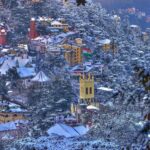
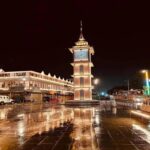


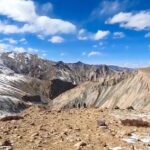

This blog help me to travel 🧳 in kashmir.thanks for this important blog. With huge and important information. Thanks aaquib sir ❤️.
May Allah bless you.